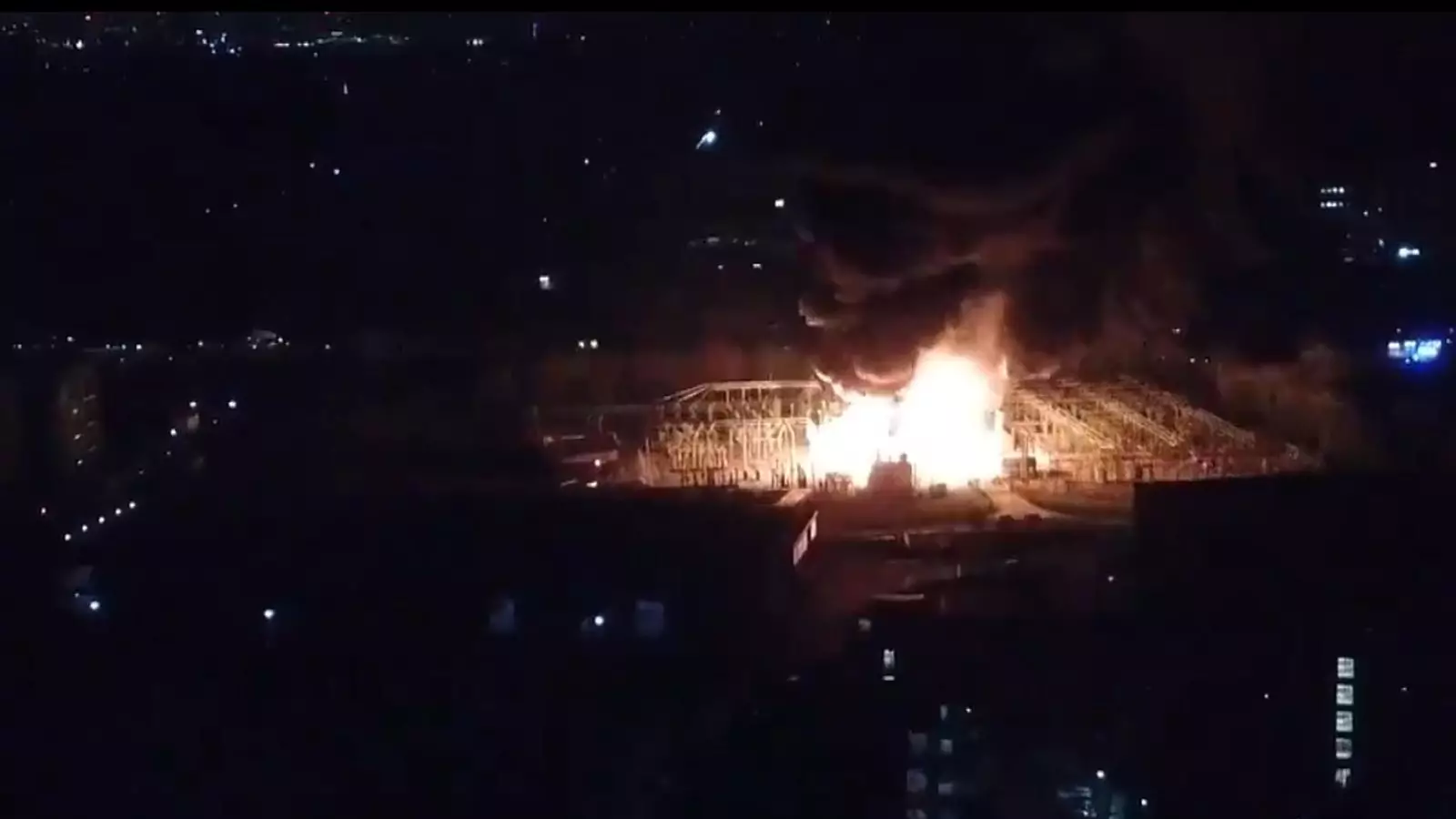In a significant turning point for air travel and local energy reliability, Heathrow Airport has announced an unexpected shutdown until midnight due to a devastating fire at a nearby electricity substation. While this incident may seem like a passing inconvenience, it’s a critical reminder of how interconnected our infrastructures are, and how quickly everything can unravel. With the airport being one of the busiest in the world, this crisis is not merely a localized event but is poised to resonate across the globe.
The statement from airport officials underscores the gravity of the situation: a “significant power outage” that has disrupted the schedules of over 1,351 flights and rendered even the most meticulous air travel plans obsolete. Such an event raises some serious questions about our current infrastructure’s resilience and, more importantly, where our priorities lie in managing public safety against operational efficiency.
Flight Disruptions: A Ripple Effect
Heathrow typically operates with the precision of a Swiss watch, where planes take off and land every 45 seconds. However, the reality of thousands of travelers stranded and diverted speaks volumes about dependency on a reliable system. Passengers have been conspicuously warned to stay away from the airport, highlighting that more than just logistics are at stake; public safety is paramount during these emergencies. Nevertheless, the forced inaction stemming from this event throws our travel plans into disarray and showcases how quickly routine can devolve into chaos.
British Airways, the largest carrier at Heathrow, echoed similar sentiments expressing concern over customer impacts. The callousness with which such emergencies can disrupt people’s lives is truly alarming. The travel options that were once so easily available are now shrouded in uncertainty, leading many travelers into a limbo state, unsure of their next steps or how long disruption might last.
The Bigger Picture: Infrastructure Challenges
At the heart of this crisis lies deeper issues surrounding infrastructure and energy management. The fire that caused the power outage is located in Hayes, a stone’s throw from the airport, and has knocked out electricity to an estimated 16,000 homes. While safety measures are surely being deployed—such as the evacuation of nearby residents and the establishment of a 200-meter cordon—the incident exposes underlying vulnerabilities in the electrical framework that supports both residential and commercial operations.
The London Fire Brigade’s rapid response—deploying 10 engines and approximately 70 firefighters—reflects the frantic urgency of the situation. Yet, it also raises alarm bells about the preparedness of our safety net infrastructure. Situations like these prompt us to scrutinize not just the firefighting measures in place but also the robustness and redundancy of the systems that serve both everyday citizens and international travelers.
Local and National Responses
The response to the fire illustrates yet another facet of the crisis: local communities wrestling with immediate realities while national entities scramble to restore stability. A spokesperson from the National Grid promising expedited power restoration will echo hollow if not met with tangible results. The urgent moves made by local authorities and response teams highlight that having a plan in place is futile unless it can be executed effectively during high-stress incidents.
Moreover, calls from the London Fire Brigade for neighbors to close doors and windows to avoid smoke contamination shine a spotlight on how intertwined our lives are in this densely populated urban setting. As we retreat to our homes, the airspace above us becomes a chaotic tapestry lining the world, and we are reminded how fragile our normalcy can be.
Every flight that gets rerouted, every passenger that boards another aircraft in a different country, tells a story of disruption that spreads like wildfire across the globe. While we often take these mechanisms for granted, this incident fosters an urgent dialogue about the adequacy of our infrastructure and its ability to cope with unexpected challenges. This alarmingly quaking fire could become a defining incident underscoring the fragility of modern life, sparking conversations that need to occur about the strength of our systems.

